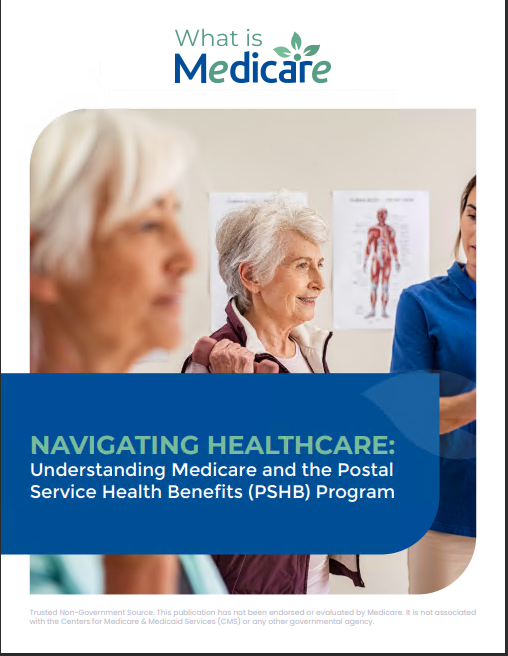Key Takeaways:
- If you have employer insurance and are eligible for Medicare, understanding how both work together ensures you’re adequately covered.
- Knowing when to enroll in Medicare while maintaining employer insurance can help you avoid potential penalties and coverage gaps.
Have Employer Insurance? Here’s How It Works Hand-in-Hand with Medicare to Cover Your Needs
For individuals approaching the age of 65, understanding how Medicare integrates with their existing employer insurance is crucial. While employer insurance often provides comprehensive coverage, Medicare can fill gaps and ensure that you are fully protected. This article explores how Medicare complements your employer insurance, the key timelines to be aware of, and the steps you need to take to ensure seamless coverage.
Understanding Employer Insurance and Medicare
Employer insurance is health coverage provided by your employer, often covering you and possibly your family. This insurance usually includes various health benefits such as hospital care, doctor visits, and prescription drugs. On the other hand, Medicare is a federal health insurance program primarily for people aged 65 or older, but also for some younger individuals with disabilities. Medicare is divided into different parts: Part A (hospital insurance), Part B (medical insurance), Part C (Medicare Advantage plans), and Part D (prescription drug coverage).
When you have both employer insurance and Medicare, they work together to coordinate your healthcare costs. The key to making the most out of these benefits is understanding which plan is the “primary payer” and which is the “secondary payer.” The primary payer pays first, covering the majority of your costs, and the secondary payer covers some or all of the remaining costs.
Primary and Secondary Payers: How They Work Together
The coordination of benefits between Medicare and employer insurance is essential to avoid paying out-of-pocket for expenses that could have been covered. Generally, if you work for a company with 20 or more employees, your employer insurance will be the primary payer, and Medicare will be secondary. This means your employer plan pays first, and Medicare pays second.
However, if you work for a smaller company with fewer than 20 employees, Medicare may be your primary payer, and your employer insurance will be secondary. This distinction is crucial because if Medicare is supposed to be your primary payer and you haven’t enrolled, your employer insurance might not cover all your costs, leaving you with higher out-of-pocket expenses.
Important Considerations for Retirees
If you retire but choose to keep your employer insurance through a retiree health plan, Medicare often becomes the primary payer once you turn 65. In this case, it’s vital to enroll in Medicare on time to ensure you do not miss out on coverage and to avoid late enrollment penalties.
Enrollment Timelines: Avoiding Penalties and Gaps
Understanding when to enroll in Medicare is critical, especially if you have employer insurance. There are specific timelines to keep in mind:
-
Initial Enrollment Period (IEP): This is a seven-month window that begins three months before your 65th birthday, includes the month of your birthday, and ends three months after. If you’re still working and covered by employer insurance, you may delay enrolling in Medicare Part B without penalty, but it’s essential to assess whether your employer insurance is sufficient on its own.
-
Special Enrollment Period (SEP): If you are covered by employer insurance when you turn 65, you qualify for a Special Enrollment Period. This allows you to sign up for Medicare Part B without facing late enrollment penalties once your employment or coverage ends. The SEP lasts for eight months following the end of your employer insurance.
-
General Enrollment Period (GEP): If you miss your Initial Enrollment Period and do not qualify for a Special Enrollment Period, you can enroll during the General Enrollment Period, which runs from January 1 to March 31 each year, with coverage starting on July 1. However, enrolling during the GEP may result in a late enrollment penalty for Part B.
Penalties for Late Enrollment
It’s crucial to avoid missing your enrollment deadlines because penalties can be costly. If you delay enrolling in Medicare Part B without having qualifying employer insurance, you could face a late enrollment penalty, which is a lifetime increase in your Part B premium by 10% for each full 12-month period you could have had Part B but didn’t enroll.
Similarly, if you delay enrolling in Medicare Part D (prescription drug coverage) without other credible drug coverage, you may also face a late enrollment penalty, calculated based on how long you were without coverage.
Deciding Between Employer Insurance and Medicare
When you’re eligible for Medicare, you may wonder whether you should drop your employer insurance or keep both. The decision depends on several factors, including the cost of your employer insurance, the benefits it offers, and how it compares to Medicare coverage.
Cost Considerations
In some cases, keeping your employer insurance might be more expensive than enrolling in Medicare, especially if your employer’s plan has high premiums, deductibles, or co-pays. It’s important to compare the costs and benefits of both options to determine which provides better value for your healthcare needs.
Coverage Comparison
Employer insurance plans vary significantly, and some may offer better coverage than Medicare alone. However, Medicare may offer benefits that your employer plan does not, such as coverage for skilled nursing facilities or specific preventive services. It’s wise to review both your employer insurance plan and Medicare to understand what each covers and where there might be gaps.
How to Coordinate Employer Insurance with Medicare
If you decide to keep both Medicare and employer insurance, coordinating the two can help you maximize your coverage and minimize out-of-pocket costs. Here are some steps to take:
-
Communicate with Your Benefits Administrator: Before you enroll in Medicare, speak with your employer’s benefits administrator to understand how your employer insurance coordinates with Medicare. They can provide details on how the two plans work together and help you determine the best course of action.
-
Evaluate Prescription Drug Coverage: Compare your employer’s prescription drug coverage with Medicare Part D to decide which is better for your needs. If your employer’s coverage is as good as or better than Medicare’s, you may not need to enroll in Part D immediately.
-
Review Your Needs Annually: Your healthcare needs may change over time, so it’s essential to review your coverage annually. During Medicare’s Open Enrollment Period (October 15 to December 7), you can make changes to your Medicare coverage if needed.
Medicare Part C and Employer Insurance
Some individuals may consider Medicare Advantage (Part C) plans, which are offered by private insurance companies approved by Medicare. These plans often include Part A, Part B, and sometimes Part D benefits. However, enrolling in a Medicare Advantage plan may affect your employer insurance, so it’s crucial to fully understand how this choice might impact your coverage.
Navigating the Transition to Medicare
As you approach retirement or continue working past 65, it’s essential to plan for the transition from employer insurance to Medicare. Start by researching and understanding your options well in advance. Here’s what to keep in mind:
-
Start Planning Early: Begin researching Medicare and your employer’s insurance options at least six months before your 65th birthday. This gives you ample time to gather information and make informed decisions.
-
Consider Your Spouse’s Coverage: If your spouse is covered under your employer insurance, you’ll need to explore options for their coverage as well. Some spouses may be able to continue under employer insurance even after you switch to Medicare, while others may need to find alternative coverage.
-
Budget for Potential Costs: Transitioning to Medicare may result in different out-of-pocket costs, so it’s wise to budget accordingly. Consider factors such as premiums, deductibles, and copayments under both Medicare and any supplemental insurance you might choose.
-
Seek Professional Guidance: If you’re unsure about your options or the best path forward, consider consulting with a licensed insurance agent who specializes in Medicare. They can provide personalized advice based on your specific circumstances.
Final Thoughts on Employer Insurance and Medicare
Navigating the intersection of employer insurance and Medicare can seem daunting, but understanding how they work together is key to maximizing your healthcare benefits. By staying informed, planning ahead, and reviewing your coverage options regularly, you can ensure that you have the protection you need without facing unexpected costs or coverage gaps. As you approach Medicare eligibility, take the time to evaluate your employer insurance, compare it with Medicare, and make decisions that best suit your healthcare needs.
Contact Information:
Email: [email protected]
Phone: 3615551234









